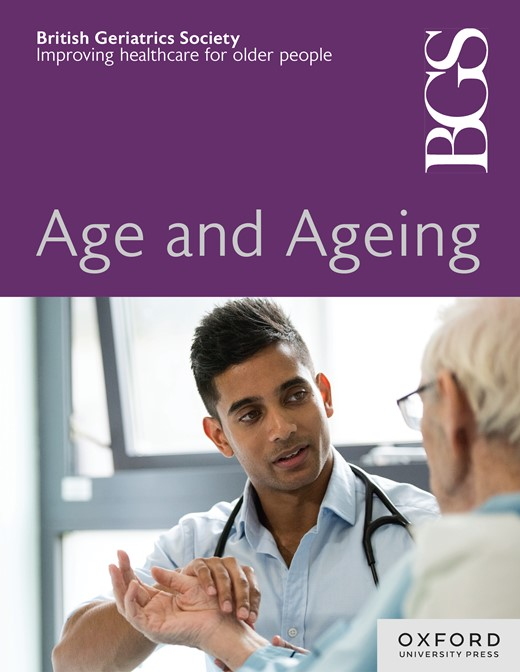Association of low bone mineral density and dementia in older women: insights from the Longevity Improvement and Fair Evidence Study
IF 6
2区 医学
Q1 GERIATRICS & GERONTOLOGY
引用次数: 0
Abstract
Background Both osteoporosis and dementia have emerged as important public health challenges in Japan’s aging population. This study aimed to investigate the impact of low bone mineral density (BMD) on the subsequent risk of dementia in older Japanese women aged ≥65 years, given the overlapping demographics of individuals affected by these two conditions. Methods This cohort study was conducted using osteoporosis screening data and insurance claims data from a municipality. We identified 8618 women (median age: 73 years) who underwent osteoporosis screening between April 2019 and March 2021. Participants with a BMD <80% of the young adult mean were assigned to a low-BMD group (n = 2297), whereas those with a BMD ≥80% were assigned to a control group (n = 6321). The study outcomes were new-onset all-cause dementia and Alzheimer’s disease (AD). To estimate the risk of low BMD on these outcomes, we constructed Cox proportional hazards models that adjusted for covariates (age, care needs, year of cohort entry, comorbidities and medications) using inverse probability of treatment weighting. Results The low-BMD group had a significantly higher risk of developing both all-cause dementia (adjusted hazard ratio: 1.58, 95% confidence interval: 1.20–2.08) and AD (1.61, 1.11–2.36) than the control group over approximately 30 months of follow-up. Conclusion These findings suggest that low BMD is associated with medium-term onset of dementia. Osteoporosis screenings could be useful not only for the secondary prevention of osteoporosis, but also for the primary prevention of dementia.老年妇女低骨密度与痴呆的关系:来自寿命改善和公平证据研究的见解
骨质疏松症和痴呆症已成为日本老龄化人口面临的重要公共卫生挑战。本研究旨在调查低骨密度(BMD)对≥65岁日本老年妇女痴呆后续风险的影响,考虑到受这两种情况影响的个体的人口统计学重叠。方法本队列研究使用骨质疏松症筛查数据和保险索赔数据进行。我们确定了8618名女性(中位年龄:73岁),她们在2019年4月至2021年3月期间接受了骨质疏松症筛查。骨密度≥80%的参与者被分配到低骨密度组(n = 2297),而骨密度≥80%的参与者被分配到对照组(n = 6321)。研究结果为新发全因痴呆和阿尔茨海默病(AD)。为了估计低骨密度对这些结果的影响,我们构建了Cox比例风险模型,使用治疗加权逆概率调整协变量(年龄、护理需求、队列进入年份、合并症和药物)。结果在大约30个月的随访中,低骨密度组发生全因痴呆(校正风险比:1.58,95%可信区间:1.20-2.08)和AD(1.61, 1.11-2.36)的风险明显高于对照组。结论低骨密度与痴呆中期发病有关。骨质疏松筛查不仅可用于骨质疏松的二级预防,也可用于痴呆症的一级预防。
本文章由计算机程序翻译,如有差异,请以英文原文为准。
求助全文
约1分钟内获得全文
求助全文
来源期刊

Age and ageing
医学-老年医学
CiteScore
9.20
自引率
6.00%
发文量
796
审稿时长
4-8 weeks
期刊介绍:
Age and Ageing is an international journal publishing refereed original articles and commissioned reviews on geriatric medicine and gerontology. Its range includes research on ageing and clinical, epidemiological, and psychological aspects of later life.
 求助内容:
求助内容: 应助结果提醒方式:
应助结果提醒方式:


